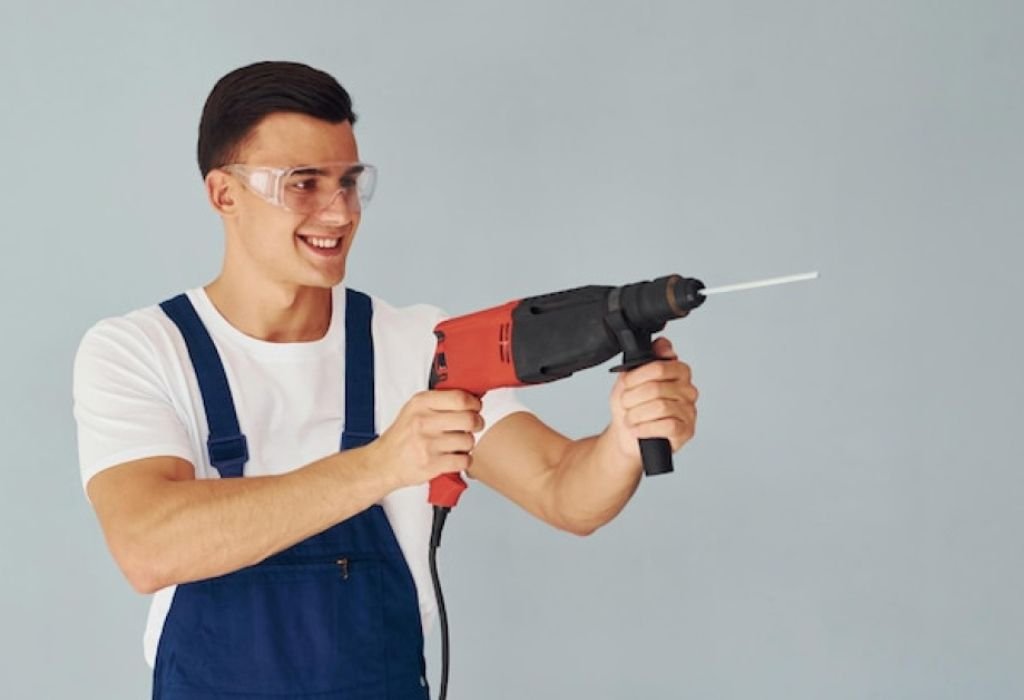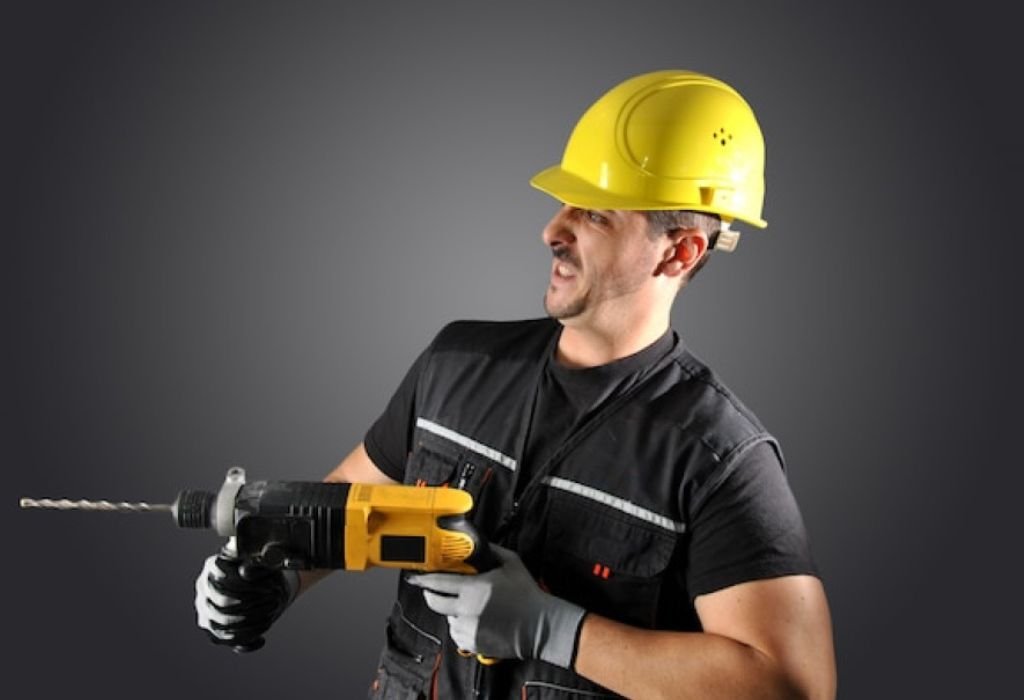Imagine working on a project where drilling into concrete is effortless, but the moment comes to tighten bolts or fasteners, the tool in hand is a rotary hammer.
The question arises: can you use dickets with a rotary hammer, or is it a misuse that could damage both tool and hardware?
This curiosity is common among DIYers and professionals alike. Rotary hammers are designed for heavy-duty drilling in concrete, stone, and masonry, delivering thousands of blows per minute.
In fact, some models produce over 4,600 BPM (blows per minute), making them far more powerful than standard drills .
The problem is torque control. Unlike impact drivers or wrenches, rotary hammers focus on drilling efficiency, not fastening precision. Studies show that improper torque can reduce fastener strength by up to 25%, leading to safety risks and structural failures (ResearchGate).
Still, many look for a workaround using adapters and sockets. The potential benefits include saving time, avoiding extra tools, and managing urgent jobs on site. But risks such as cracked sockets, damaged adapters, and stripped bolts make this a decision that requires careful consideration.
This article explores whether using dickets with a rotary hammer is practical or problematic. It breaks down how rotary hammers work, the role of adapters, the pros and cons, safe practices, and when to use the right alternative tool.
By the end, readers will understand the exact situations where this technique works and when it is better to rely on an impact driver or wrench.
Quick Answer — When It Works and When It Doesn’t

Using dickets with a rotary hammer is possible, but only under strict conditions. The tool must be set to rotation-only mode and paired with the right SDS adapter and impact-rated sockets.
Rotary hammers are designed for drilling concrete and masonry, not for torque-sensitive fastening. When used with sockets, they can provide rotational power, but lack the precision and torque control of impact drivers or wrenches.
This setup can work in a pinch for light or non-critical fastening tasks. However, relying on it for structural applications, automotive work, or any job requiring specific torque values is unsafe and may damage both the socket and the tool.
Can you use dickets with a rotary hammer?
Yes, but only with an SDS adapter in rotation-only mode.
Is this a good replacement for an impact wrench?
No, because rotary hammers are not designed to control torque accurately.
Will hammer mode help loosen bolts?
No, hammer mode is for breaking masonry and can shatter sockets or damage fasteners.
Do I need impact-rated sockets?
Yes, only impact sockets can handle the stress safely without cracking.
When is it acceptable to use this method?
Only for temporary or low-risk fastening where precise torque is not critical.
Rotary Hammer Basics — Mechanism, Modes, and Specs
Rotary hammers use an electropneumatic piston system that delivers high-impact energy into concrete and stone. Unlike regular hammer drills, these tools are engineered for heavy-duty drilling and chiseling.
Most rotary hammers feature three modes: drill-only, hammer-drill, and hammer-only. The drill-only mode provides continuous rotation without impacts, making it the only safe option for attaching sockets.
Some models reach 800 RPM with 4,600 blows per minute (BPM), which shows how powerful they are for masonry drilling (Milwaukee). In contrast, an impact driver focuses on torque delivery rather than drilling speed.
What do the different modes mean?
Drill = rotation only; Hammer-drill = rotation + impacts; Hammer-only = chiseling function.
Why can’t hammer mode be used with sockets?
Because impacts are designed for concrete, not bolts, and can shatter sockets.
Do rotary hammers have a clutch?
Some do, but most lack torque clutches needed for controlled fastening.
Is SDS the same as a drill chuck?
No, SDS is a slotted shank system for bits, designed for hammer drilling and secure bit retention.
Are all rotary hammers equally powerful?
No, SDS-Plus is common for light to medium work, while SDS-Max delivers far higher impact energy.
The Hardware You Need — Adapters and Sockets
To use dickets with a rotary hammer, a special adapter is required. The most common is an SDS-Plus to 1/2-inch square drive adapter that allows sockets to be mounted.
Adapters must always be used in drill-only mode to avoid socket or tool damage. A hex adapter can also be used for bits, but only for very light-duty fastening.
The sockets themselves must be impact-rated. Standard chrome sockets are brittle and can crack under stress, posing safety hazards.
Which adapter works with most rotary hammers?
SDS-Plus adapters fit most consumer-grade tools.
Can I use a drill chuck adapter?
Yes, but only for light bits, and always in rotation-only mode.
Do adapters reduce tool life?
Yes, because added stress and wobble can wear down the chuck.
Are impact sockets mandatory?
Yes, they’re thicker and built to handle shock and torque.
What happens if I use regular sockets?
They may shatter, sending metal fragments flying.
Pros and Cons vs. Using an Impact Driver/Wrench

Using dickets with a rotary hammer has a few advantages. It allows you to use one tool for multiple tasks, saving time and equipment in emergencies.
However, the downsides outweigh the benefits in most cases. Lack of torque control, slower workflow, and high wear on adapters make this solution less efficient than impact drivers.
Impact drivers and wrenches are specifically designed for torque applications. They include clutches, torque ratings, and ergonomics that rotary hammers simply do not provide.
Which tool is faster for fastening?
An impact driver or wrench is always faster and safer.
Does a rotary hammer risk over-tightening bolts?
Yes, because it has no clutch or torque settings.
Is socket use with rotary hammers efficient?
Not compared to using the proper tool.
Can I mix roles occasionally?
Yes, but only for quick, low-risk fastening.
What happens with heavy-duty steel bolts?
They require an impact wrench to prevent hardware damage.
Safe Setup — Step-by-Step
To use sockets safely, insert the SDS-Plus adapter into the rotary hammer. Next, attach the correct-sized impact socket to the adapter.
Switch the tool to rotation-only mode, start at low speed, and gradually increase power. Always wear protective gloves and eye protection during use.
Avoid hammer or hammer-drill mode at all costs. These functions are designed for masonry and will quickly ruin sockets.
What’s the first safety step?
Confirm the tool is in rotation-only mode.
Can I use hammer mode for more torque?
No, it will destroy the socket.
Is PPE necessary for this?
Yes, always wear gloves and safety glasses.
Can the adapter get stuck?
Yes, but reversing the tool usually frees it.
Do manufacturers recommend this use?
Most do not, as it may void warranties.
Use Cases That Can Work “In a Pinch”
There are limited scenarios where using dickets with a rotary hammer is acceptable. These include quick tightening of temporary structures, scaffolding clamps, or light-duty anchors.
For most structural or automotive jobs, this method is discouraged. The risks of socket breakage and improper torque outweigh the convenience.
Specialized tasks, like grounding rod driving, already have custom rotary hammer attachments. Using sockets instead is unsafe and impractical.
Can I use sockets for Tapcon screws?
No, use an impact driver after drilling with the rotary hammer.
What about scaffolding clamps?
Yes, but only for quick assembly, not permanent work.
Can sockets be used on car lug nuts?
No, lug nuts require proper torque from an impact wrench.
What about threaded rod couplers?
Yes, they can be snugged in low-risk projects.
Are sockets good for demolition work?
No, chisels and drivers are the right choice for demolition.
Better Alternatives and Tool Pairings
A professional toolkit usually includes both a rotary hammer and an impact driver. The rotary hammer handles the drilling, while the driver or wrench handles fastening.
This combination ensures efficiency, safety, and proper torque application. It also protects both the hardware and the tool from unnecessary stress.
Statistics show that improper torqueing is one of the leading causes of bolt failure in construction (Engineering Toolbox). Having the right tool prevents costly errors.
What’s the best tool combo for masonry work?
Rotary hammer for drilling and impact driver for fastening.
Do torque settings really matter?
Yes, they prevent under-tightening or over-tightening.
Are cordless kits worth investing in?
Yes, they save time and increase mobility.
What about heavy-duty bolts?
Always use an impact wrench.
Do anti-vibration features help?
Yes, but only for drilling, not for fastening.
Step-by-Step Mini-Guide (Checklist)

- Select the correct impact socket.
- Insert an SDS-Plus to 1/2-inch adapter.
- Set tool to rotation-only mode.
- Start at low speed and test on scrap material.
- Verify torque with a torque wrench if precision is required.
How do I prevent over-tightening?
Use a torque wrench to confirm final settings.
What if the socket cracks?
Stop immediately and replace with a proper impact socket.
What if the adapter wobbles?
It may be worn out and should be replaced.
Can I use this setup daily?
No, it’s only for emergency or temporary use.
What happens if I ignore tool mode settings?
The socket or adapter will likely break.
Conclusion — Practical Verdict and Final Advice
So, can you use dickets with a rotary hammer? Yes, but only with an SDS adapter, impact-rated sockets, and in rotation-only mode.
This method works only for temporary or emergency fastening, never for precise torque applications. For professional or safety-critical tasks, an impact driver or wrench is the only reliable option.
The right tools not only save time but also protect hardware, reduce risks, and extend equipment life. Investing in both a rotary hammer and an impact driver is the smarter choice for anyone serious about safe and efficient work.
Can you rely on this method for all jobs?
No, it’s only a backup option.
What’s the professional recommendation?
Always use the correct tool for fastening.
What’s the biggest mistake users make?
Leaving hammer mode on while using sockets.
What’s the final takeaway?
Use it in a pinch, but buy the right impact tool for long-term safety.

I’m John F. Nicholas, the founder, lead writer, and drill enthusiast behind 101drill.com. With years of hands-on experience in power tools and DIY projects, I created this platform to share practical knowledge, expert tips, and real-world insights to help others master the art of drilling.
